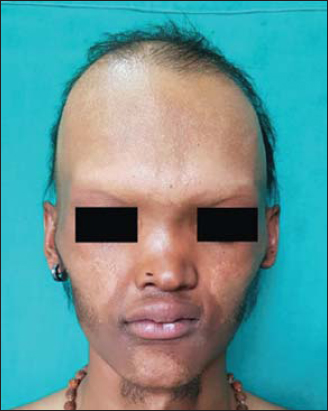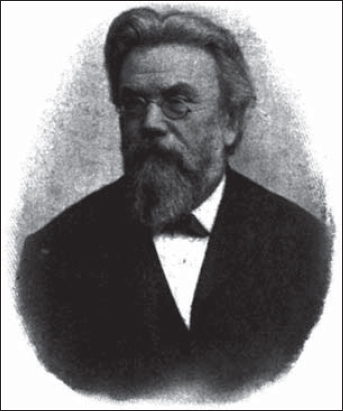Dermatology Eponyms – sign –Lexicon (Z)
Piotr Brzezinski 1,2, Lorenzo Martini2, Samriti Sood3
1,2, Lorenzo Martini2, Samriti Sood3
1Department of Physiotherapy and Medical Emergency, Faculty of Health Sciences, Pomeranian Academy, Slupsk, Poland, 2University of Siena, Department of Pharmaceutical Biotechnologies, Via A. Moro 2, 53100 Siena, Italy, 3Department of Dermatology, Venereology and Leprosy, Indira Gandhi Medical College Shimla, Himachal Pradesh, India
Corresponding author: Dr. Piotr Brzeziński, MD PhD
Submission: 08.07.2019; Acceptance: 12.11.2019
DOI: 10.7241/ourd.2020e.181
Cite this article: Brzeziński P, Martini L, Sood S. Dermatology Eponyms – sign –Lexicon (Z). Our Dermatol Online. 2020;11(e):e181.1-e181.2.
Citation tools:
Copyright information
© Our Dermatology Online 2020. No commercial re-use. See rights and permissions. Published by Our Dermatology Online.
ABSTRACT
Eponyms are used almost daily in the clinical practice of dermatology. And yet, information about the person behind the eponyms is difficult to find. Indeed, who is? What is this person’s nationality? Is this person alive or dead? How can one find the paper in which this person first described the disease? Eponyms are used to describe not only disease, but also clinical signs, surgical procedures, staining techniques, pharmacological formulations, and even pieces of equipment. In this article we present the symptoms starting with (Y) and other. The symptoms and their synonyms, and those who have described this symptom or phenomenon.
Key words: Eponyms; Skin Diseases; Sign; Phenomenon
ZAUFAL’S SIGN
Samriti Sood. Saddle nose (Fig. 1). For example sign of ectodermal dysplasia [1–3].
 |
Figure 1:Zaufal’s sign. |
EMANUEL ZAUFAL
Czechoslovakian rhinologist (Fig. 2), 1833-1910, was a doctor, associate professor and later a professor at the Medical Faculty of Charles University, founder of the Ear Clinic at the General University Hospital in Prague. He has perfected examination and surgical methods in the ear and nose medicine, the author of specialist papers in the field. Zaufal’s contribution to the field consisted primarily in improving diagnostic methods in the ear and nose medicine, identifying the causes of purulent otitis media and applying new surgical methods in surgical treatment in the field [4,5].
 |
Figure 2:Emanuel Zaufal (thanx to zeneo.org). |
ZONE SIGN
In precipitation reactions, three zones may appear in the supernatant: a zone of antibody excess, in which uncombined antibody is present; a zone of equivalence, in which both antigen and antibody are completely precipitated and no uncombined antigen or antibody is present; and a zone of antigen excess, in which all antibody has combined with antigen and additional uncombined antigen is present (in this zone, precipitation is partly or completely inhibited because, in the presence of excess antigen, soluble antigen-antibody complexes form) [6–11].
ZYMOTIC SIGN
A disease due to the action of a ferment, as of a morbific germ or a ptomaine [12].
REFERENCES
1. Brzeziński P, Wollina U, Espinoza-Benavides L, Chang P, Mohamed M, Geller SA. Dermatology Eponyms –sign –Lexicon (S). Part II. Our Dermatol Online. 2018;9:470-7.
2. Rani R, Sood S, Gupta M, Sharma RK. Milia like lesions in a 21 year male of hypohidrotic ectodermal dysplasia. Our Dermatol Online. 2019;10:292-4.
3. Anjan S, Morillas J, Simkins J, Martinez OV, Holung M, Prado C, et al. Saddle nose deformity in an immunosuppressed patient. Clin Infect Dis. 2019 Feb 1;68(4):705-709.
4. Kierzek A. [Has introduction of cocaine helped in development of otorhinolaryngology?]. Otolaryngol Pol. 2004;58:1227-34.
5. Piffl O. Emanuel Zaufal (1837–1910). Arch Ohrenheilkun. 1910;82:132-41.
6. Olson MA, Legler PM, Zabetakis D, Turner KB, Anderson GP, Goldman ER. Sequence tolerance of a single-domain antibody with a high thermal stability:comparison of computational and experimental fitness profiles. ACS Omega. 2019;4:10444-54.
7. Qi J, Li B, Zhou N, Wang X, Deng D, Luo L, et al. The strategy of antibody-free biomarker analysis by in-situ synthesized molecularly imprinted polymers on movable valve paper-based device. Biosens Bioelectron. 2019;142:111533.
8. Abreu Velez AM, Devaro J, Howard MS. A cutaneous rash with mixed gell coombs allergic features, sclerodermoid changes and status post previous therapy. Our Dermatol Online. 2017;8:420-3.
9. Abreu Velez AM, Cohen DJ, Howard MS. Plakophilin 4 and ARVCF expression in a bullous cutaneous drug reaction. Our Dermatol Online. 2017;8:410-2.
10. Abreu Velez AM, Brown VM, Howard MS. Cytoid, colloid and large intra-blister round bodies and c-ANCAs in a case of erythema multiforme. Our Dermatol Online. 2017;8:282-5.
11. Radia C, Salim G, Kawtar I, Zahra MF, Taoufiq H. Pemphigoid gestationis:A Moroccan study. Our Dermatol Online. 2017;8:128-32.
12. Xu Q, Sun M, Ning J, Fang S, Ye Z, Chen J, et al. The core role of bacillus subtilis and aspergillus fumigatus in pile-fermentation processing of qingzhuan brick tea. Indian J Microbiol. 2019;59:288-94.
Notes
Source of Support: Nil.
Conflict of Interest: None declared.
Request permissions
If you wish to reuse any or all of this article please use the e-mail (brzezoo77@yahoo.com) to contact with publisher.
| Related Articles | Search Authors in |
|
 http://orcid.org/0000-0001-6817-606X http://orcid.org/0000-0001-6817-606X |



Comments are closed.